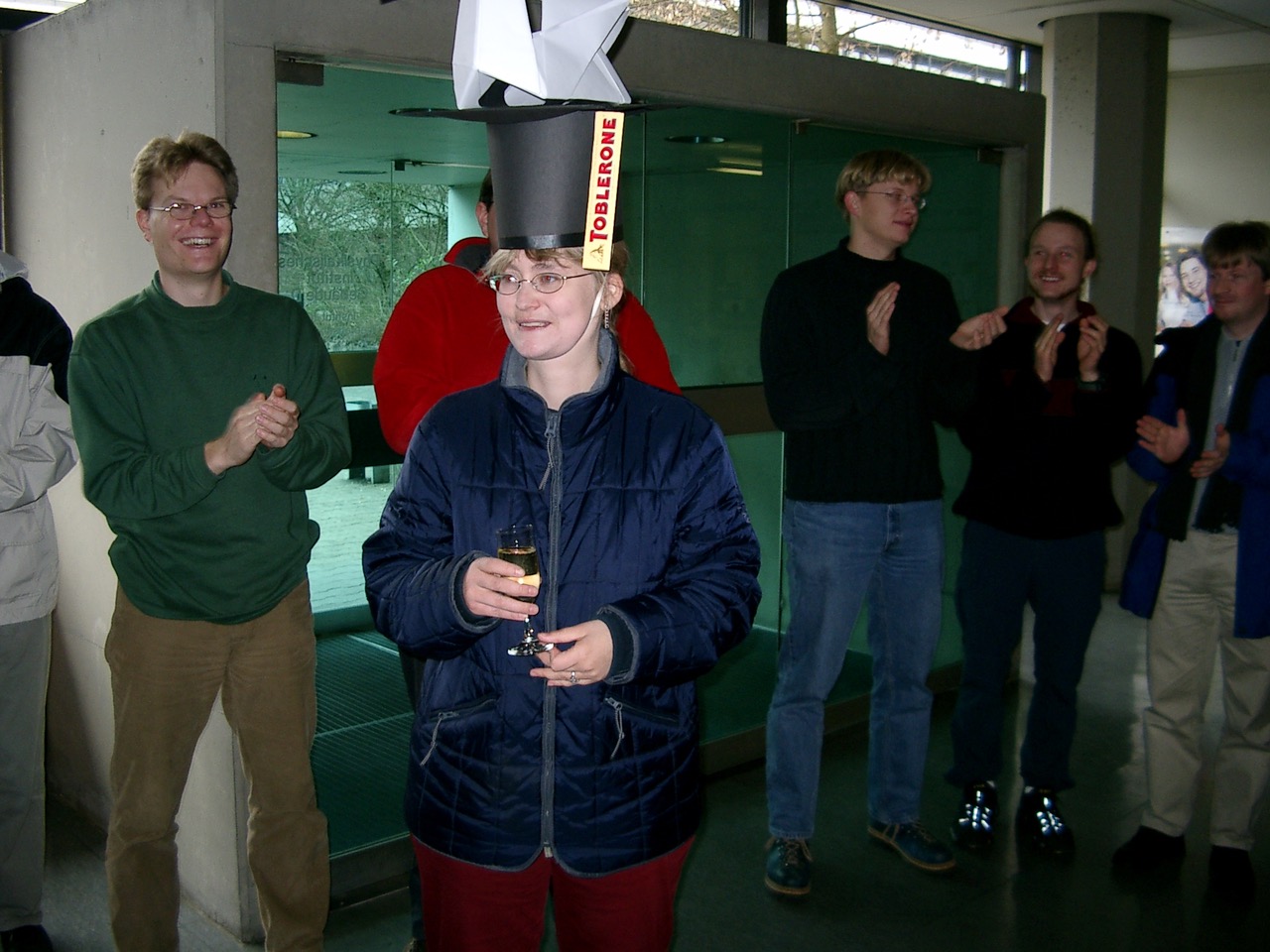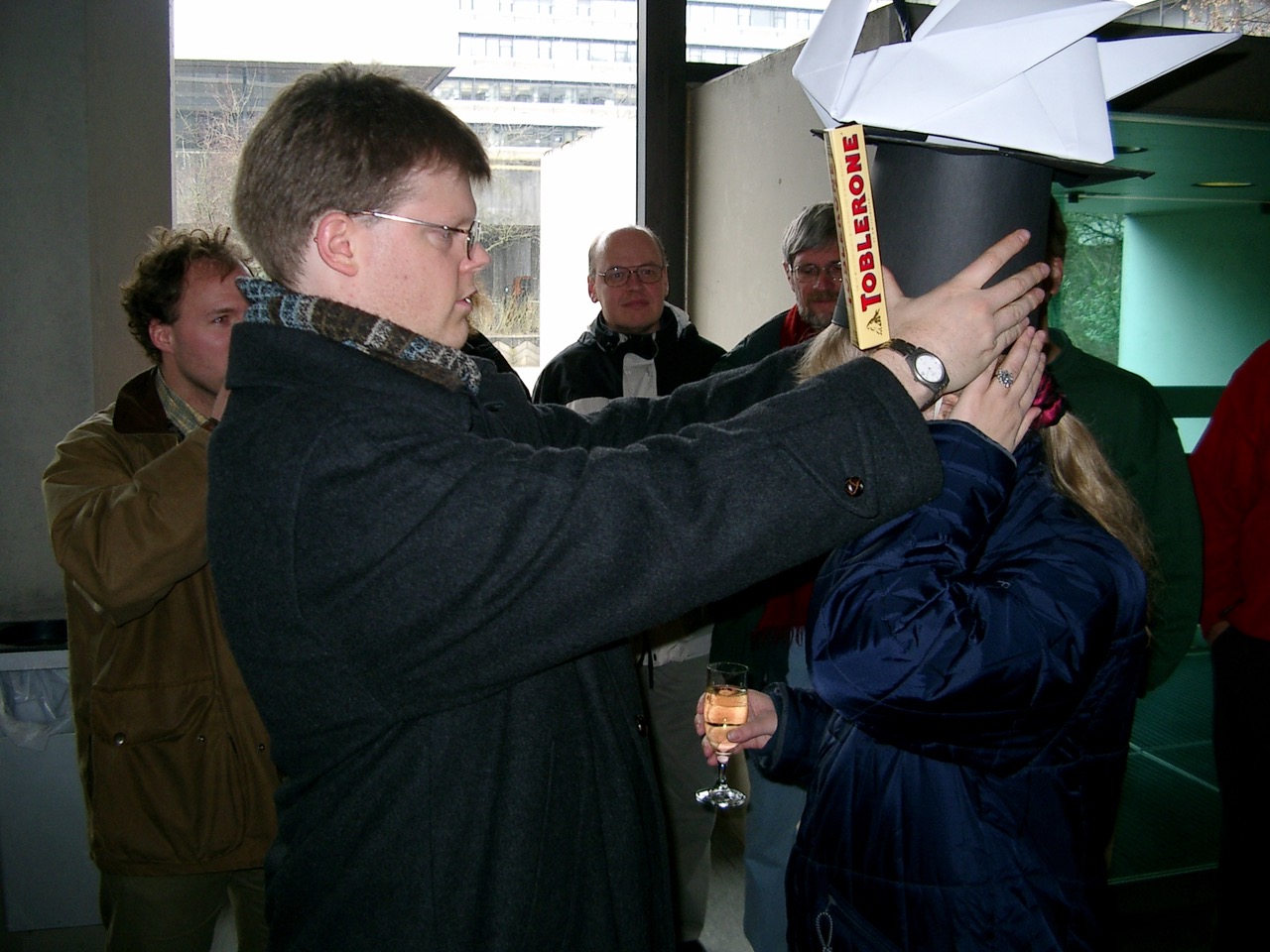
Photo credit: David Friedlander (GSFC)
Dr. Karl Remeis Observatory is deeply saddened by the unexpected passing of our dear friend, colleague, and mentor Dr. Katja Pottschmidt on Tuesday, June 17 2025.
Born May 31, 1971, in Aurich, Germany, into a military family (her father was in the German air force), Katja grew up in Aurich and Freising, Germany, in Norfolk, VA, and in Mons, Belgium. The family then settled in Balingen, Germany, where Katja finished high school. Following her life-long interest in Astrophysics — and an affinity for Star Trek — Katja studied physics at Tübingen University, Germany, where she received her undergraduate and Dr. rer. nat. degrees in Physics. Her undergraduate focus was on linear state-space modelling of variability of black holes with EXOSAT. Her 2003 dissertation under advisor Rüdiger Staubert, focused on the X-ray variability of Cyg X-1 using data from the Rossi X-ray Timing Explorer (RXTE). During her PhD, Katja discovered the strong changes in the X-ray lag spectra during state transitions in black holes, which she attributed to changes in the accretion flow geometry, a paradigm that has since become well-accepted in the field. Her passion for the study of black holes and neutron stars led her to positions in Geneva, Switzerland, where she became the archive scientist for INTEGRAL (employed by MPE) from March 2002 to December 2004. This was followed by a postdoc at the University of California, San Diego, in Rick Rothschild’s RXTE-HEXTE group, where she especially worked on its background model. During this time, spectroscopy and variability studies of strongly magnetized accreting neutron stars caught her interest. In October 2007, Katja joined CRESST and UMBC to begin her position at NASA Goddard. She continued pursuing her research on neutron stars and black holes, and over the years was a member of the Guest Observer Facilities for INTEGRAL, Suzaku, Hitomi, NICER, XRISM, and NuSTAR (in the last years as the science lead). She was also informally involved with setting up the IXPE GOF.
Katja enjoyed working with students, including interns at GSFC; a PhD student at UMBC; and many students in Jörn Wilms’ group at Remeis Observatory, where she often served as a second mentor. Katja’s mentorship extended beyond just offering insightful comments on many projects focusing on accreting neutron stars and black holes. She also kept an eye out for opportunities for students to highlight their work, and for professional connections that the work would benefit from. Her home in Greenbelt was always welcome to students visiting Goddard, where she took great care to show them the highlights of both Greenbelt and GSFC, while also ensuring that they left after having formed lasting scientific connections. Her wide interest and care for others’ experiences extended beyond the scientific realm to include recommendations of many inspiring books, unique restaurants, and beautiful spots around the world.
At Goddard, Katja was very active in welcoming and integrating new postdocs, despite the challenges of COVID during the pandemic and herself having had open-heart surgery just before the pandemic. In recent years, she also started an informal group at GSFC on X-ray timing analysis and served as the driving force behind the international “XMAG collaboration,” coordinating multi-mission observations of accreting neutron stars and shepherding the group into writing an extensive review of neutron star pulse profile studies. Unfortunately, she will not be able to see the final version of this document. The review will be dedicated to the loving memory of Katja, in hope to reflect her spirit and continue inspiring future generations in the field she cared so deeply about.
In Greenbelt, Katja first lived in the Lerner apartments before joining GHI. She loved Greenbelt, embracing its co-op culture and the free spirit of the town. She was a regular at the New Deal Cafe, almost exclusively shopped at the COOP, frequently went to the movie theater, and every Sunday bought a crepe for breakfast and apples at the farmers’ market. Her love of reading (especially fantasy and science fiction) led her to be one of the founding members of Greenbelt’s book club. She fed the birds and squirrels in her garden, which was a great source of joy for her, and knew the Greenbelt woods and Greenbelt’s history by heart. Young postdocs moving to the area could always rely on her showing them the hidden gems of the city, which was her home.
Katja is survived by her parents Jürgen and Inge, her sister Antje with partner Wolfgang and niece and nephew Mika and Ronja and her loving partner of more than 20 years, Jörn Wilms, who would visit Goddard every 4-6 weeks for the entirety of Katja’s time working there.
At Dr. Karl Remeis Observatory, Katja will always be remembered as a special member — someone who helped to make it the warm, home-like place it is today: a place not only of science, but also of friendship and belonging. She will live on in our hearts and in our stories.


Credit: Klaus Werner (University of Tübingen)



